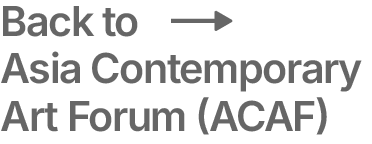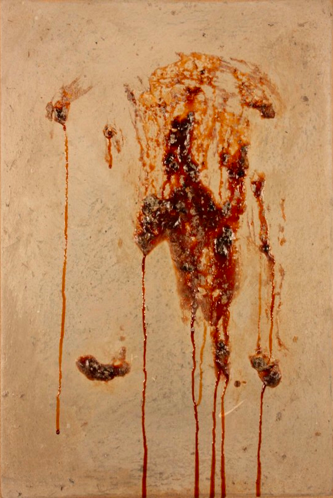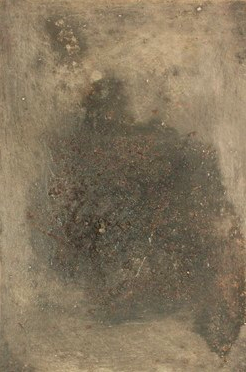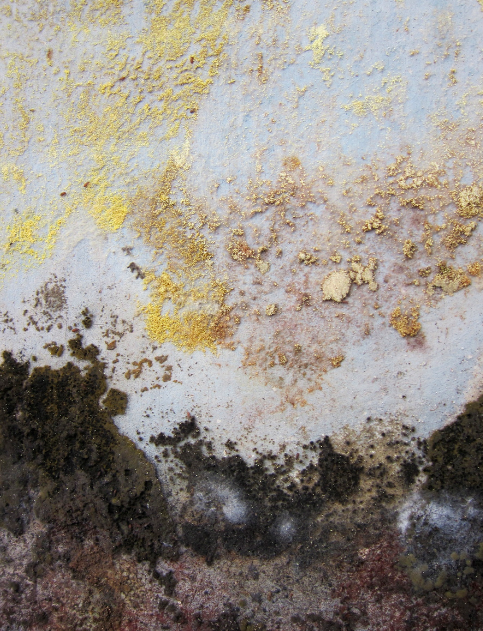Interview with Ali Van
1.How did you start making art?
On dew-damp days, just before the rain, I would sit outside and make things. There was always a mess made, unconscious and unencumbered. The surrounding fauna and temperature of ground on which we played often inspired various woolly gestures and thought. An awareness to the onset of a foggy deluge provided mental padding for artful play, as though every earthly wetting made way for cleansed palettes and a sense of renewed time. Getting dirty meant we would eventually reach a dirt-free plateau; then dirt-free tides would rumble, hit and fall to suspend us onto another plane for other-dirtying. I think the joys of making art are often found in the forward/backward, upward/downward cycles of blemished sanitation.
Untitled (Dust I), dust print, size variable, 2007
2.Briefly describe your art from the perspective of what it could tell us about you.
Analytical poetics and alchemical intersections absorbed in the
Bends, twists, and croppings of digested, regurgitated material.
Cosmic and cosmetic aestheticizations of action and reenactments
Diluted to delineate natural and artificial happenings.
Elevations of observations
Ferociously systemic and residual.
Graceful eeriness, empty, subtle irony
Haptic perceptions; beauty and non-beauty.
Incidental elements permeating layers of dis-permanence
Juggling private and public thresholds and
Kalologies of time.
Looping beginnings to their ends
Meditating on moments, energized and breathless.
Narcissism echoing cognitive structures
Obduracy in purifying the mind.
Purging of anger as pretentious and unfruitful
Qua deceptive exhaustion and passive aggressiveness.
Reflective projection, and self-inflection
Self-exposure and self-exploration.
Translations of interiority
Umbilical raptures and tastes of beauty.
Volatile rotations, mirrors and embellishments
Watching journeys filter and congest the recycled through
Xesturgies of surface.
Yearning for traces of motion and duration
Zoning space to reclaim desire.
Photomontage (V+VII), 2-4R prints with transparencies, 6×8″, 2007
3.What experiences have most influenced your choice of subject matter, medium and style?
Edibles to devour: freezers filled with tubs of color and flavor, fresh loaves with floured facades, muffin interiors, jars, boxes, packages and piles. Chewing, languor, swallowing, digesting, excreting, and equipoise.
Places to wade and revel: morning markets stocked with radishes, tall grass, dancing tea leaves, hyacinths, alstroemeria, peaks and breeze in sweat, midnight mist, voids for happenstance, puffy carpets and moist meat-raw under palms and between fingers.
I am interested in the internal rapture of a beaten beauty; one made of collected movement, forgotten residue and dispensed foodstuffs. I enjoy working with formal ambiguities gained through chance and process and which engage layers of conflict through suspended and melded experience, material and memory.
Untitled (P-Cream), cream print, size variable, 2008
4.Is your formal or informal training as an artist useful?
I think learning to exercise, acknowledge, challenge, embrace, obsess, contest, bridle and liberate one’s conscious structure and being is useful. Creative training in school and life’s daily digests have provided me with seasons to immerse into cultural and aesthetic interludes, all of which have informed and continue to inform my practice.
Untitled (Nightcap), wander print, size variable, 2009
5. What would you say is the purpose for making art?
I think its purpose is to make something become something. It is about problematizing experience and creating recipes that concretize physiological, cultural and aesthetic patterns. Making art keeps us moving; it disembodies us slightly to trigger a freedom for modes of play – work, process and intuition. Making art provides opportunity for exchange and growth; it allows us to exercise our decision-making abilities to explore something different and sometimes new: something individual and sometimes personal, pleasurable, truthful and/or real.
Untitled (Acai), sugar, dust, chili and acrylic on panel, 12×18″, 2010
6.Do you appreciate culturally specific works of art? If so how does your personal and cultural background show up in your work?
I think our cultural and personal backgrounds inherently participate in our thought process and artistic practice. The direction of an exploration at any point in time may engage multiple digressions, with patterns of in-flow, out-flow, pause, suspension, strain and erasure. There is a lovely continuous blurring of things that allows practice to stay alive, evolve and alter the speeds of time.
I am affected by the genuine, enkindled and spontaneous wanderings of mind and body. I’m not always certain art making gives breath to art. I’m not always certain if art creation requires acute consciousness. I’m not always certain if art exists for itself or if it is present to inform a larger, indefinite practice, of life. I’m not always certain if art making provides a platform for collecting and reformulating history. I’m not always certain if it reclaims time.
Untitled (Taste the Rainbow), sugar, charcoal, oil and acrylic on panel, 12×18″, 2010
7. Is there anything you would like to say about your local art scene or the international art market, art education, and or system for art exhibition?
Everything is growing and the boundaries that were once held high are dissipating. I think an artist should continue to document, consume and filter information within known systems of art. However, more time should be spent out of context. It is through sudden extraction and temporal cleansing that we allow our cultural, social and natural inclinations to dissolve and become a-historical, fractured and malleable – just for a moment – for something new.
Death Panel III, food, dust, mildew on panel, 12×18″, 2011
8. How does your current portfolio fit into the rest of your body of work?
I like re-experiences; I often rework, reuse, replay and redefine processes to make new recipes. I enjoy taking something familiar and finding the unfamiliar within it. The evolution of a single work is unpredictable, and works in their original or assembled/deconstructed forms continue to grow and collect.









